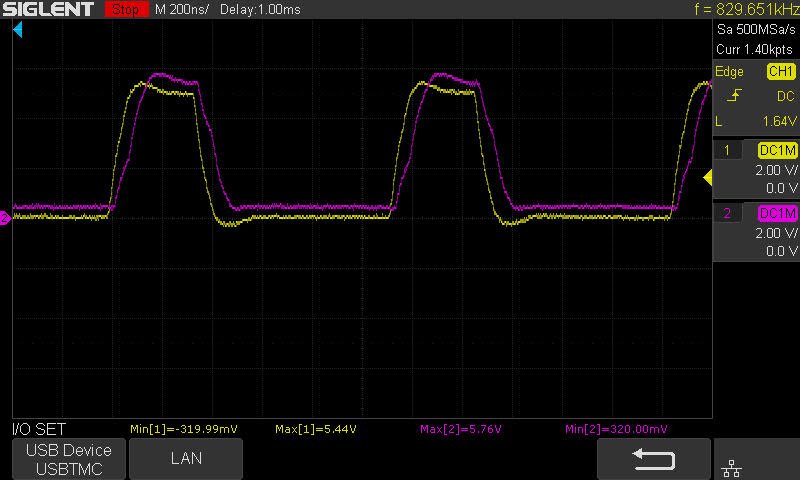Other Parts Discussed in Thread: SN74LVC1G17
Hi!
We use this circuit as a logic signal amplifier. Our system looks like that we have a:
1. signal transmitter
2. signal-power cable
3. signal amplifier circuit based on SN74LVC1G08DBVR
4. installation consisting of LEDs.
The SN74LVC1G08DBVR module is damaged after some time of operation and reduces the amplitude of the signal sent from 5V to +/- 1-2V. It is still possible to read the appropriate signal shape, but its level drops drastically.
We noticed that heating the system with hot air instantly "fix" the problem and it works properly for the next few hours. After some time, the signal is degraded again. Failure does not always occur. We use several such modules and some of them get damaged and others work without problems.
What could be the problem? Have you encountered a similar case?
The module layout is attached.
Thanks,
Peter



